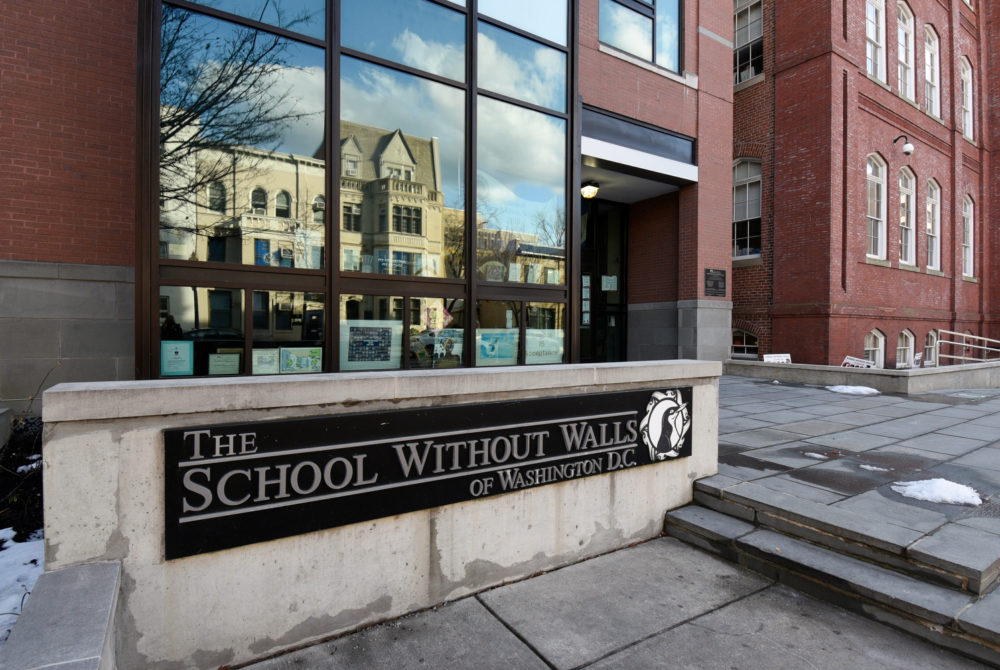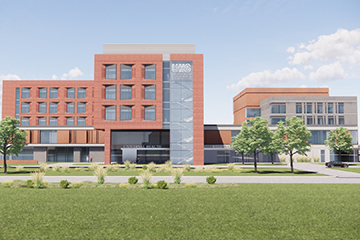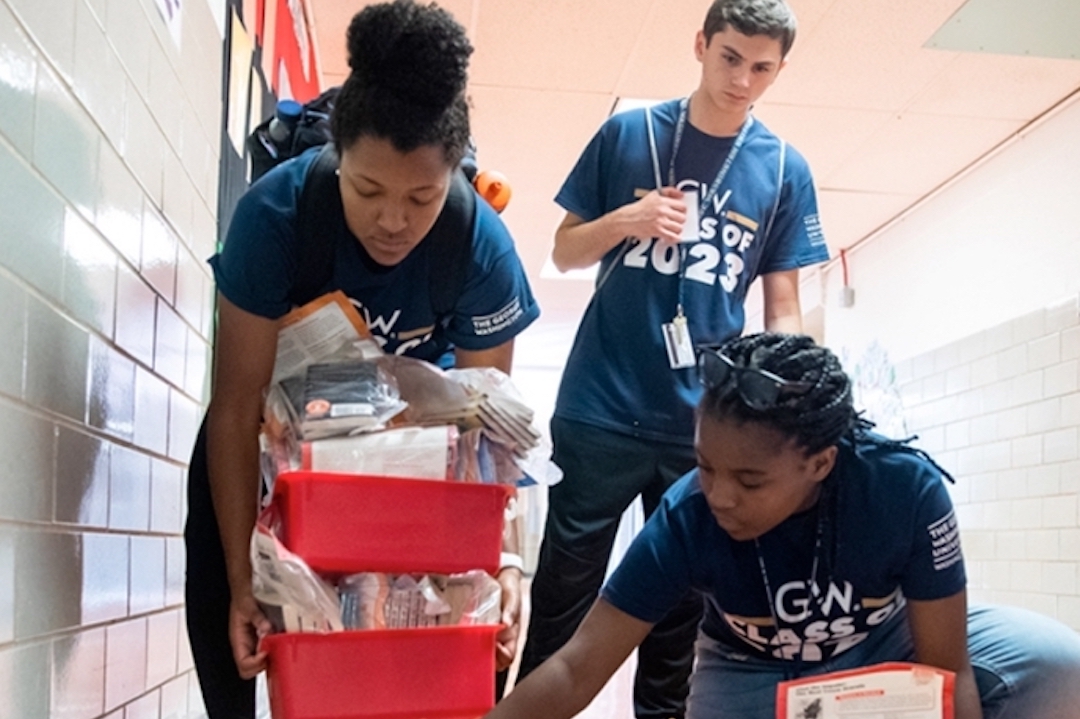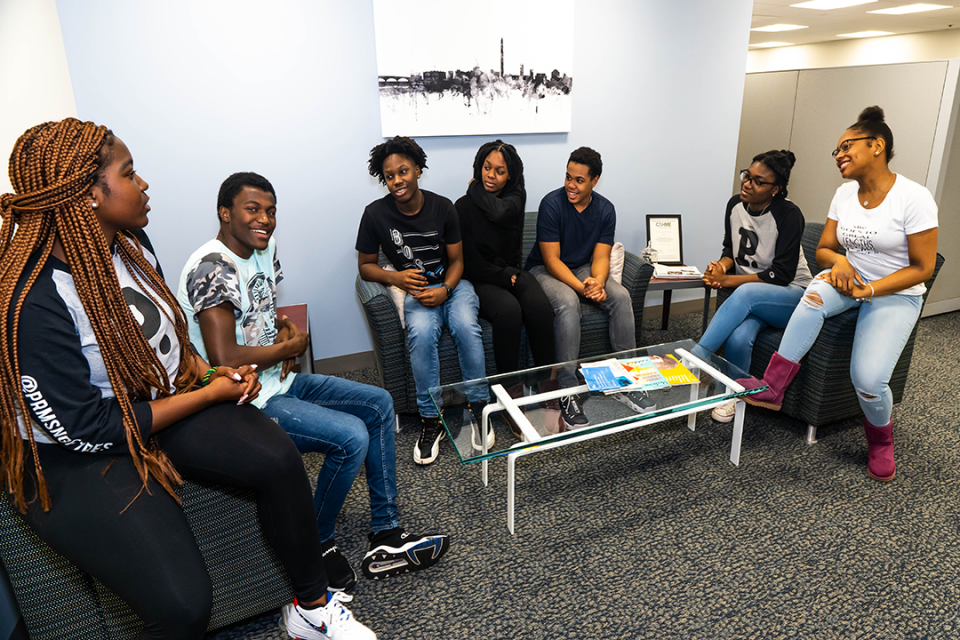District Partnerships
For more than 200 years, the fates and fortunes of both GW and Washington, D.C., have been closely intertwined. Together, we have seen both great opportunities and challenges, and we have strengthened our bonds through our shared experiences. Thanks to these strong ties, we have established many community partnerships, guided by the deep conviction that we have a responsibility to serve our local communities. The projects and programs that have emerged from our partnerships are based on mutual care, respect and collaboration.
GW’s civic engagement activities in the District, many of which are led by the Honey W. Nashman Center for Civic Engagement and Public Service, cover a depth and breadth of critical issues that are important to its residents. They promote equity and active citizenship in a diverse democracy, focus GW’s resources to address community needs through reciprocal partnerships beyond the campus, and enhance teaching, learning, and scholarship at GW. The Office of Government and Community Relations publishes the annual GW Serves DC Report, featuring an overview of the civic engagement activities that GW has undertaken.
From bridging the gap in health disparities for minority communities to helping K-12 students thrive academically, GW is playing an important role in D.C.’s recovery. The university’s mission provides teaching, research and service across many disciplines and areas, to ensure our communities prosper.
Learn more about some of these partnerships below:
DC Public Schools (DCPS)
GW is deeply committed to our city's public schools. Located on the Foggy Bottom campus, GW is intimately involved at the School Without Walls since 1980. Renovated in 2012, Walls’ students share all GW facilities, benefit from GW professors’ teachings, and many even take courses at GW to earn a GW Associates Degree with their high school diploma. The university has another long standing academic partnership: the Duke Ellington School of the Performing Arts. Since its founding over 40 years ago, GW has supported students through use of facilities, professors, library and programs for their academic work.
In addition, GW's Graduate School for Education and Human Development has offered expertise to support accelerated reforms, which have helped DCPS become the most improved public school system in the nation. GW students, faculty, and staff volunteer frequently to help DCPS students with their academics. To date, GW has provided more than $25 million in scholarships through the Stephen Joel Trachtenberg Scholarship to DC high school students to attend GW with a full, four-year scholarship covering tuition, room and board, books and fees at the university.
Cedar Hill Regional Medical Center, GW Health
In February 2022, GW - along with the DC government, Universal Health Services, and Children's National Hospital - broke ground on the new $375 million, 365,000-square-foot medical campus, Cedar Hill Regional Medical Center, GW Health. The GW Medical Faculty Associates and the GW School of Medicine and Health Sciences (SMHS) will serve as the physician and academic arm of the new hospital, with Children’s National Hospital offering pediatric care.
The new medical campus provides opportunities for GW’s academic medical faculty to support the health care needs of the citizens in Ward 7 and Ward 8, but it also expands opportunities for GW students and residents to provide care and learn by working with patients and families. GW is committed to providing world-class, patient-centered care while addressing disparities in health outcomes and expanding our teaching, research, and clinical footprint in the District.
Welcome Day of Service
Welcome Day of Service is the official welcome event for the incoming first-year class at GW. The president, provost, faculty, staff and student leaders join first-year students for a day filled with various service projects around the District. The annual service day tradition began in 2010 after former First Lady Michelle Obama challenged the university to complete 100,000 volunteer hours in one academic year. The university has exceeded that number every year since. Projects vary from year to year and spread across all eight wards of the District.
In the past, projects have included aiding organizations that support families such as painting the walls of classrooms at the Gap Community Child Center in Northwest D.C., which has educated the children of immigrant and low-income families since 1982, and helping build Habitat for Humanity houses. Students have also participated in trash clean-up projects across D.C. parks, weeded the Anacostia River watershed and trained for disaster and emergency response with GW Emergency Medical Response Group (EMeRG) and the National Academy of Sciences’ LabX.
Academics in the Community
Through the nonprofit Promising Futures, the GW community engages D.C. high school and middle school students to become peer educators on everything from health to social justice and leadership skills. The Promising Futures program, founded by GW alumna and visiting professor Maranda Ward, Ed.D. ’17, is one of numerous community partnerships that GW faculty, staff and students have with nonprofit and government agencies throughout the Washington, D.C., area.





